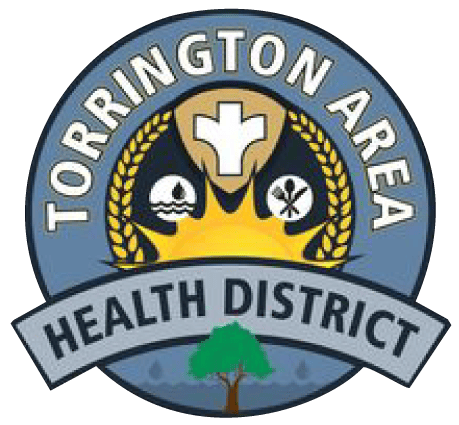About Lead
What is lead?
Lead is a metal found in our natural environment. Over time, it has been used in products such as paint, varnish, and gasoline. Due to its wide use, lead can be found in most of our communities.
What is lead poisoning?
Lead poisoning occurs when a detectable level of lead is found in the blood. There is no safe level of lead for any person, but it can be very harmful to children, pregnant woman or adults who have long-term exposure.
- Lead poisoning can cause brain damage, reduced IQ and attention span, learning disabilities, developmental delays, hearing loss, and other health problems such as seizures, coma and, in rare cases, death.
- Most childhood lead poisoning occurs when children swallow lead dust or lead paint chips.
- Lead poisoning is the most preventable childhood disease.
Primary Sources of Lead
The four primary ways that people are exposed to lead is:
- Lead-based paint
- Dust from lead-based paint
- Soil contaminated with lead
- Water contaminated with lead
Most childhood lead poisoning cases are caused by lead-based paint and lead dust in houses built before 1978.
Locations where lead is most likely found around the home
- Doors
- Windows
- Porches
- Stairs
- Soil around the foundation of the home
Non-Environmental Sources: Below are other ways in which someone can become lead poisoned:
- Ayurvedics – remedies or medications used in some ethnic communities as part of their cultural traditions or treatment
- Cosmetics – products that are used as traditional make-up or for ceremonial or religious purposes
- Imported food and spices
- Jewelry
- Toys
- Clothing
- Occupational – can include painters, remodelers, contractors, construction workers, battery and metal recyclers, bridge workers
- Hobbies – can include pottery and ceramics, stained glass, fishing and firearm
Information For Parents
Why Lead Poisoning Matters
Silent but serious: Most children with lead poisoning show no symptoms, yet even low levels can harm brain development, learning, and behavior.
Common exposure: Lead-based paint in homes built before 1978 is the most frequent source of exposure.
Young children at risk: Due to hand-to-mouth behavior, toddlers are especially vulnerable to ingesting lead dust or chips.
Blood Lead Testing Requirements in Connecticut
Mandatory testing:
- All children between 9 and 35 months must be tested annually.
- Children 36–72 months must be tested if they haven’t been previously or are at higher risk (e.g., enrolled in medical assistance or living in high-risk areas).
- Testing is also required if clinically indicated.
Healthcare provider responsibilities:
- Provide education on lead poisoning prevention before testing.
- Notify parents if a child’s blood lead level is above 3.5 µg/dL.
- Conduct annual medical risk assessments for children aged 36–72 months.
Understanding Blood Lead Test Results
If a capillary blood lead test is equal to or greater than 3.5µg/dL, confirm with a venous blood lead test. · Children should be re-tested with a venous level until the blood lead level is below 3.5 μg/dL.
- < 3.5 µg/dL: No further action needed.
- 3.5–9.9 µg/dL: Retest within 3 months.
- 10–19.9 µg/dL: Retest within 1 month.
- 20–44.9 µg/dL: Retest within 2 weeks or as soon as possible.
- ≥ 45 µg/dL: May require hospitalization and specialized care.
- Children with elevated levels will need a confirmatory venous blood test.
Tips to Reduce Lead Exposure at Home
- Inspect for peeling or chipping paint, especially in homes built before 1978.
- Prevent children from playing in soil near old buildings.
- Wash children’s hands frequently, particularly before meals.
- Clean toys and surfaces weekly using wet cleaning methods.
- Provide a diet rich in calcium, iron, and zinc to help reduce lead absorption.
- Consult your local health department for additional support.
Additional educational materials can be found here.
Local Health Departments’ Responsibilities
The Torrington Area Health District (TAHD) plays a vital role in preventing and managing childhood lead poisoning across its 20-town service area in northwestern Connecticut. TAHD’s responsibilities are guided by Connecticut state law and local health regulations, with a focus on early detection, education, enforcement, and environmental safety.
Case Management (≥ 3.5 µg/dL)
TAHD provides case management for children with blood lead levels (BLLs) of 3.5 µg/dL or higher, including parent notification, follow-up communication, education, and coordination with healthcare providers.
Epidemiological Investigations (≥ 5 µg/dL, confirmed venous)
In accordance with Connecticut law, TAHD conducts mandatory epidemiological investigations for children with a confirmed venous BLL of 5 µg/dL or higher. This includes a review of potential sources and home visits to assess risk.
Environmental Lead Inspections
TAHD conducts lead inspections of homes when required by statute or when a child has an elevated BLL. Inspectors test paint, dust, soil, and sometimes water to identify lead hazards.
Enforcement of Lead Hazard Remediation
TAHD ensures that property owners comply with orders to abate lead hazards. This includes:
- Reviewing and approving abatement plans
- Monitoring remediation progress
- Requiring post-abatement clearance testing
- Education and Community Outreach
TAHD educates families, landlords, and the public on the dangers of lead exposure, safe cleaning practices, and how to maintain lead-safe environments. Educational materials and direct outreach help prevent exposure before it occurs.
Referrals to Medical and Support Services
TAHD connects families with elevated BLLs to pediatric lead treatment programs, developmental services, and other resources as needed.
Collaboration with State Agencies
TAHD works closely with the Connecticut Department of Public Health (DPH) to implement statewide lead poisoning prevention initiatives, comply with data reporting requirements, and stay current with best practices.

